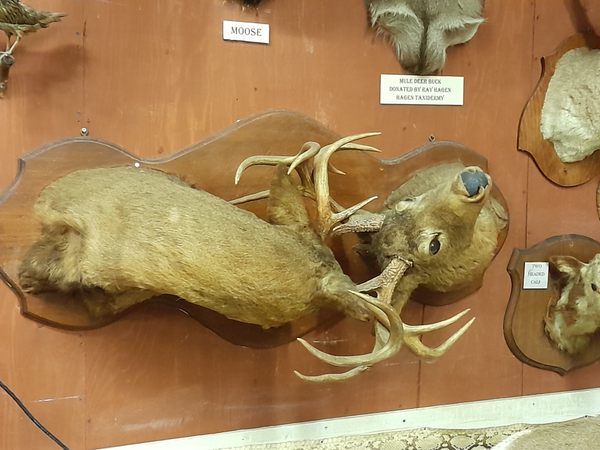Glasgow, Montana is located in the middle of nowhere. Literally—in 2018, the Washington Post named it America’s most isolated city, as it is at least four and a half hours from any direction from any metropolitan area. Glasgow is surrounded by even smaller towns (such as Fort Peck, pop. 239 in 2020) that rely on the “middle of nowhere” for jobs and supplies. Despite the isolation, Glasgow and its surroundings are rich in natural beauty, wildlife, and American history. And to celebrate all of this, the town has an (appropriately) tiny museum stuffed with a surprisingly big collection of everything relating to the area.
By “everything,” we really do mean everything that can be related to this area. There are things you’d expect to see in a place called the Pioneer Museum: a diorama dedicated to the Lewis and Clark expedition (which cut through this area), tools used by cowboys in the 19th century, and an impressive recreation of downtown Glasgow in the 1920s.
But there are also things you wouldn’t see in most other museums, like an exhibit dedicated to the local high school. The school’s song plays when you step in, and you can look at the cheerleading uniforms (the mascot is the Scotties) and read yearbooks going back decades. In the middle of the museum is a section dedicated to the local Boy and Girl Scout troops, and another section dedicated to old toys that belonged to residents. Some items have notes from their donors explaining the item’s backstory. There’s a real local pride to the museum, which only adds to its charm.
The highlight of the museum, by far, is the large taxidermy room in the back. All forms of Montana wildlife are represented, from rattlesnakes to bison to an Audubon’s bighorn sheep (an extinct subspecies) to multiple jackalopes. Some of the taxidermy is exceptional, such as the bucks mounted to look as though they’re locking horns; others, like a bobcat with an unnaturally arched back, probably could’ve used some improvement. Some are so old that they have paled to the point of appearing blond. Yet the whole room is still an incredible experience, reminiscent of a Victorian cabinet of curiosities. This same section of the museum also hosts a recreation of a rancher’s house and the aforementioned Western bar, both of which are so lovingly restored that you feel as though you’re really in the Wild West.

